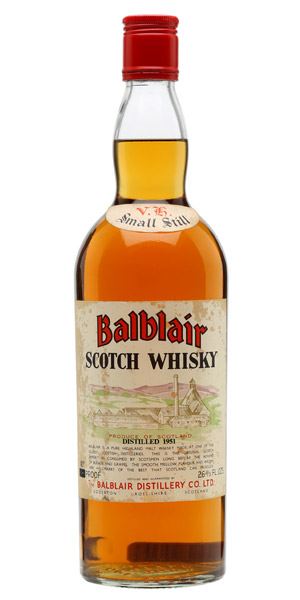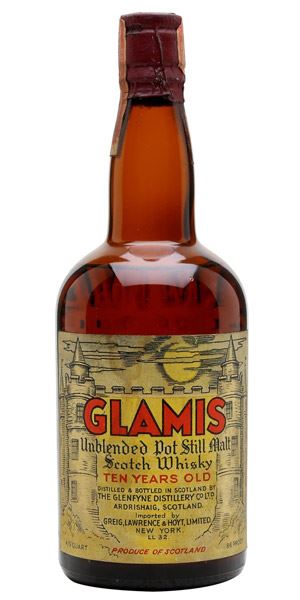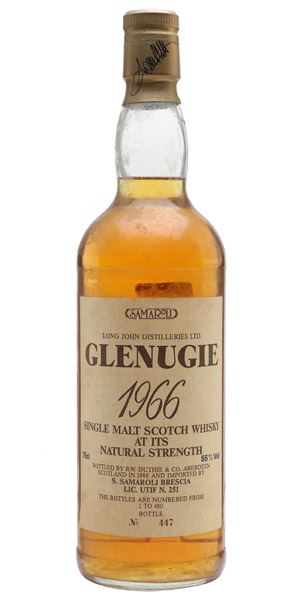-

- Price band
-
£ £ £ £ £
- ABV
- 45.7%
- Production type
- Single malt whisky
- Region
- Highland
- Flavour camp
- Fruity & Spicy
- Nose
Green and tropical fruits that possess freshness and lustre – guava, mango, pineapple, star fruit, kiwi, banana, green apple and lime zest all vie for attention. If you took modern Balblair from refill wood and turned the volume up to 11, you might be approaching this sort of profile. Goes on with a little marzipan, desiccated coconut, pollen, quince paste and runny honey. Perhaps a slosh of mead.
- Palate
The fresh fruits are swept aside for a while by these looming notes of wax polish and spices. Resinous citrus rind notes, some preserved lemons, mulling spices, a few nips of ointment, cough mixture; actually it really becomes increasingly herbal, resinous and medicinal. Also rather mentholated with time – beautifully so. The dryness increases with a lean mineral and vibrant saline edge as well.
- Finish
Long, waxy, spicy, fruity and beautifully layered.
- Conclusion
It’s fascinating to taste a whisky like this as you see where Balblair’s character has deviated to over the years, and stayed the course in other ways. A superb whisky!
- Right place, right time
A brief rain cloud soaks you in the forest, before the sun emerges as you reach the hilltop overlooking the shore.

- Price band
-
£ £ £ £ £
- ABV
- 43%
- Production type
- Single malt whisky
- Region
- Highland
- Flavour camp
- Smoky & Peaty
- Nose
A coal hearth smothered in Vicks Vaporub and bouquet garni of assorted dried herbs. This is just textbook, pre-war-style peated malt whisky – soot, many resins, waxes, medical tinctures and ointments, steel wool, old tool boxes, camphor, lanolin and paraffin. The peat is gentle, but remains coiled – brimming with residual phenolic sinew. It is also drying and rather herbal – qualities like menthol tobacco and herbal toothpaste are classical in this style and evident here in abundance. Harmonious, exemplary and rather beautiful, if globally a touch fragile.
- Palate
If the peat on the nose was suggestive of faded power, it pulls no punches here. A deep, bass-like thump clatters onto the tongue, then quickly subsides into gravel, earth, coppery notes and some other, rather thuggish, mineral aspects. There are notes of heather ale, wax furniture polish, green peppercorns, linseed oil, some natural tar resin and some rather industrial qualities as well (brake fluid, graphite, mechanical oils, etc). There’s a rawness about it and a rather uncompromising beauty, although the blade it’s swinging feels perhaps a tad dulled.
- Finish
Remarkable length. The oiliness, resinous qualities and industrial aspects shine out the loudest, with the herbs and medicine still whispering in the background. Towards the fade there’s also a betrayal of its coastal origins with these grubby harbour and salt ‘n’ vinegar notes.
- Conclusion
There is so much to wonder at in a whisky such as this one. What was the character when it was first bottled? How much has time distorted its once youthful features? What’s certain is that this was a potent brew, a muscular and almost brutal distillate like nothing at all that is produced in Scotland (or anywhere on this planet, for that matter) today. On a ruthlessly technical level it is perhaps a tad too tired, a little too unsteady on its feet to surpass the 90-point mark. But make no mistake, this is a remarkable and emotional drinking experience.
- Right place, right time

- Price band
-
£ £ £ £ £
- ABV
- 55%
- Production type
- Single malt whisky
- Region
- Speyside
- Flavour camp
- Fruity & Spicy
- Nose
A dense and syrupy compaction of tropical fruit jams and compôtes mixed with seawater, kelp, embrocation and some very expensive olive oil. Glenugie at its best can be an almost unique combination of evocatively coastal nuances and exuberant, almost obscene fruit. This one displays these qualities in spades. There’s also a touch of musk, some pine cones, white chocolate and a green olive in brine aspect. Water reveals an abundance of crushed gorse, ground white pepper, wet rocks, beach pebbles and wildflowers.
- Palate
I can understand why this whisky might split some people. The palate diverges from the more ‘obvious’ and easy fruitiness of the nose and becomes mired in a complicated morass of farmyard, wood spice, dried fruit and oily qualities. There are notes of mirabelle plum and prune eau-de-vie, camphor, cherry-flavoured cough medicine, throat sweets and a rising, pure saltiness. Water softens everything out, but only adds to the complexity. More salty notes, but also tea tree oil, sheep wool and stone fruits such as lychee and apricot. The kind of whisky you could simply spend hours picking different wee aromas and flavours from.
- Finish
Intensely long and powerful, a slow-motion scythe of barley sugar, salt, various teas, tropical fruits and lingering waxiness.
- Conclusion
I can’t help but fall on the side of mini-masterpiece with this one. The complexity is a little bewildering and almost intimidating or confrontational at times, but globally the impression is of an utterly remarkable distillate caught at its pinnacle. The kind of whisky you need to work with and grapple with at times, but the result is unquestionably rewarding.
- Right place, right time
With an old friend you haven't seen for years.

January is often a gloomy month for most people. Winter blues, post- festive slumps, diets, financial restraint, seasonal disaffection in general – all the good stuff basically. This is where the power of some really terrific drams can be something of a therapeutic balm for the soul, finds Angus MacRaild.
It’s not every day you get to compare three such hallowed or mystical drams as in today’s session. However, as MacRaild finds, it’s good to save these sorts of pricier and rarer drams for this kind of occasion. A little olfactory nourishment, some intellectual engagement and a hefty dollop of pure pleasure can go a long way to alleviating seasonal gloom.
For this session, MacRaild has lined up three whiskies with either pretty serious reputations, or weighty historical clout. First up is an extremely scarce example of the Glenfyne distillery single malt that went by the name Glamis, produced at the Highland distillery until its closure in 1937.
Tasting whisky from closed distilleries is privilege enough; to taste one from such a long-closed and geographically unique distillery, however, is remarkable indeed – doubly so for MacRaild as it was a ‘local’ distillery for his family. This example of a 10-year-old ‘unblended pot still malt’ was bottled in the 1930s for export to the US.
Following hard on its heels is the oldest known vintage bottling of Balblair: a 1951, 24-year-old single cask bottled by Gordon & MacPhail for a private family in the 1970s. A small parcel of the remaining stocks was sent to auction a few years ago, and they remain the only known bottles still in existence. MacRaild finds the whisky a fruity and invigorating delight.
To crown it all off is the first bottling of 1966 Glenugie by Italian bottler Samaroli, a single malt which has split opinion over the years, but remains a hallowed and sought-after example from the glory years of the late Italian master; not to mention, as MacRaild discovers, a shining example of this cult closed distillery’s brilliantly idiosyncratic new make.

